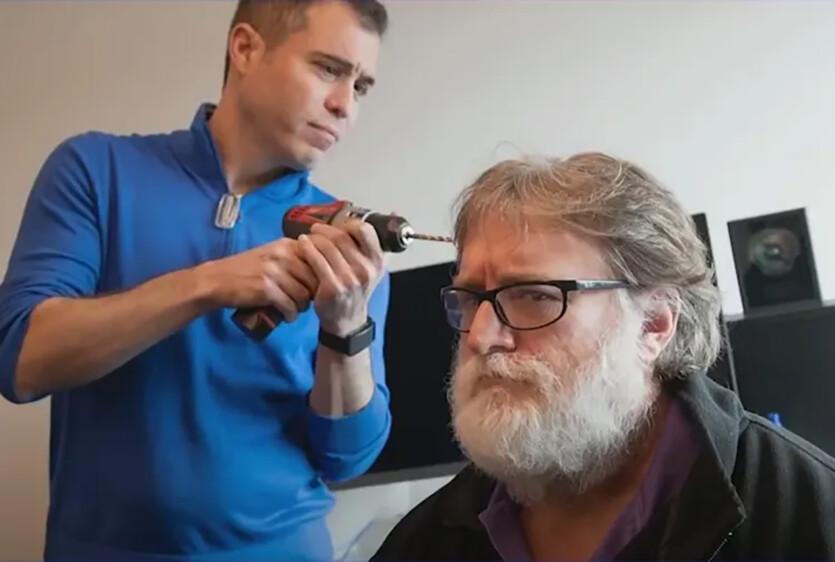
Gabe Newell wants your brain. Valve has long had plans for a neural interface, but the specifics are currently limited to the development of a chip for it.
Valve watcher Brad Lynch noted in a blog post update of the Valve Starfish neural interface project regarding the development of a specialized chip for a brain implant. This is a special «electrophysiological» chip designed to record brain activity and stimulate its stimulation. Starfish does not claim that it has already created systems for its functioning or the possibility of its implantation in the human head.
More than a decade ago, internal psychologists studied the reaction of people’s brains to computer games. Valve once considered earlobe sensors for its first virtual reality headset. The company publicly discussed the idea of brain-computer interfaces for games at GDC in 2019. In the same year, Gabe Newell founded Starfish Neuroscience, a neurointerface startup that has now unveiled plans to release its first chip later this year.
«We expect our first chips to be available in late 2025, and we are interested in finding partners for whom such a chip will open up exciting new opportunities», — writes Starfish neuroengineer Nate Cermak.
However, Starfish’s goal is to create a smaller and less invasive implant than its competitors. One that can provide simultaneous access to multiple brain areas and does not require a battery. Using only 1.1 milliwatts during «normal recording», according to Starfish, the chip will be able to operate using wireless energy transfer. The company cites the following characteristics:
- Total power consumption 1.1 mW
- Dimensions 2 x 4 mm (BGA pitch 0.3 mm)
- Recording (peaks and LFP) and stimulation (biphasic pulses) capability
- 32 electrode locations, 16 channels of simultaneous recording at 18.75 kHz
- One current source for stimulation on arbitrary pairs of electrodes
- Built-in impedance monitoring and stimulation voltage transient measurement
- On-board digital data processing and peak detection allow the device to operate over low-bandwidth wireless interfaces.
- Manufacturing on TSMC’s 55nm process technology
For comparison, Neuralink N implant1 has 1,024 electrodes on 64 wires implanted in the brain, a chip consuming about 6 milliwatts, and a battery that periodically needs to be charged wirelessly. The entire implant (not just the chip) measures about 23 mm wide and 8 mm thick.
Starfish notes that for problems such as Parkinson’s disease, it may be important to connect to multiple parts of the brain at the same time, not just one. According to the company, there is growing evidence that a number of neurological disorders are associated with dysfunction at the level of neural circuits, during which the interaction between brain areas can be disrupted. It seems that Valve is currently interested in more serious things than just games. Apple, by the way, also wants a neural interface, but the idea does not extend beyond iPhone control at this time.

Spelling error report
The following text will be sent to our editors: